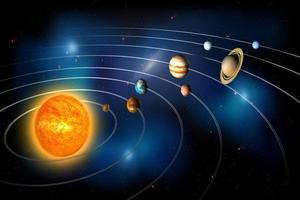21755556
UNIT 3.1 MATERIALS FOR A PURPOSE
Description
No tags specified
Resource summary
| Question | Answer |
| Ionic bonding occurs when the following types of elements bond to form a compound: A metal & metal B metal & non-metal C non-metal & non-metal | B metal & non-metal Sodium chloride (table salt) is an ionic compound. Sodium is a metal. Chlorine is a non-metal. |
| When an ionic compound is formed, the metal atoms: A gain electrons to form negatively charged ions B lose electrons to form negatively charged ions C gain electrons to form positively charged ions D lose electrons to form positively charged ions | D lose electrons to form positively charged ions |
| The chlorine atom has the electronic configuration 2,8,7. The electronic structure of the chloride ion is: | |
| Describe the structure of sodium chloride (NaCl) | Sodium chloride contains oppositely charged ions. The ions form a regular lattice (structure) in which strong electrostatic forces between oppositely charged ions act in all directions. |
| Covalent bonding occurs when the following types of elements bond to form a compound: A Metal and a metal B Metal and a non-metal C non-metal and non-metal | C non-metal and non-metal A covalent bond occurs when non-metals share a pair of electrons. The atoms bond together to form molecules. |
| A water molecule (H2O) consists of 2 hydrogen atoms and 1 oxygen atom. Draw a dot & cross diagram to show the covalent bonding in a water molecule. | OXYGEN ATOM Electronic structure 2,6 The atom is two electrons short of a full shell. The oxygen atom needs to share two pairs of electrons to complete its outer shell. HYDROGEN ATOM Electronic configuration: 1 Each hydrogen is one electron short of a full shell. Each hydrogen atom needs to share one pair of electrons to complete its outer shell. |
| The element carbon comes in different forms or ‘allotropes’. These include: • graphene • graphite • carbon nanotubes • fullerenes • diamond What is an allotrope? | Allotropes are all different forms giant molecules in which very large numbers of carbon atoms are bonded together. In each allotrope there are differences in the way that the atoms are joined. |
| Carbon fibre (1 mark) Lightest / least dense material (1 mark) Strongest material / material with highest tensile strength (1 mark) | |
| What is an alloy? | An alloy is a mixture of two or more elements, one of which is a metal. Alloys are often harder and stronger or have other properties which make them more useful than a pure metal. |
| Malleability describes the property of a substance that can be: A pulled into wires B hammered into sheets C shattered into pieces | B. Malleable materials can be hammered or pressed into shape without breaking or cracking. |
| A block of metal has has a mass of 90.0 g and sides of the same length (2 cm). Identify the metal in the block. | Volume = 2 cm x 2 cm x 2 cm = 8 cm3 Density = Mass ÷ Volume Density = 90 ÷ 8 Density = 11.3 So the metal block is made of lead. |
| Graphene is an allotrope of carbon. Carbon is a non-metal element. Graphene sheets are about 200 times stronger than steel and also have a much lower density. Suggest how these properties make graphene useful for manufacturing car parts. | 1. Graphene is a non-metal and therefore will not rust / corrode. 2. Graphene is about 200 times stronger than steel making it useful to builder safer, crash resistant cars. 3. Graphene is much lighter meaning cars will be more economical (fuel efficient). |
| What are polymers? | Polymers are organic compounds based on many carbon and hydrogen. making very large covalent molecules with atoms bonding to each other repeatedly in one direction. Polymers can be formed into complex shapes. Their strength, stiffness, and melting temperatures are generally much lower than those of metals and ceramics. |
| Give one example of a polymer and it's uses. | An example of a polymer is polyethene. Typical uses for polythene include plastic shopping bags and plastic bottles. |
| Fill in the gaps using these words: plastic, elastic, do, do not If a material goes back to its original shape, it has ______________ behaviour. In this case the particles _____________ go back to their original positions. If a material does not go back to its original shape, it has _______________ behaviour. Now the particles _____________ go back to their original positions. | If a material goes back to its original shape, it has elastic behaviour. In this case the particles do go back to their original positions. If a material does not go back to its original shape, it has plastic behaviour. Now the particles do not go back to their original positions. |
| A 20N force stretches a spring by 0.5m. a) Calculate the spring constant. b) How much force must used to stretch the spring by 1.5m? | F = k x F = Force measured in Newtons (N) k = Spring constant measured (N/m) x = extension measured in meters (m) a) k = F ÷ x k = 20 ÷ 0.5 k = 40 N/m b) F = k x x F = 40 x 1.5 F = 60 N |
Want to create your own Flashcards for free with GoConqr? Learn more.

